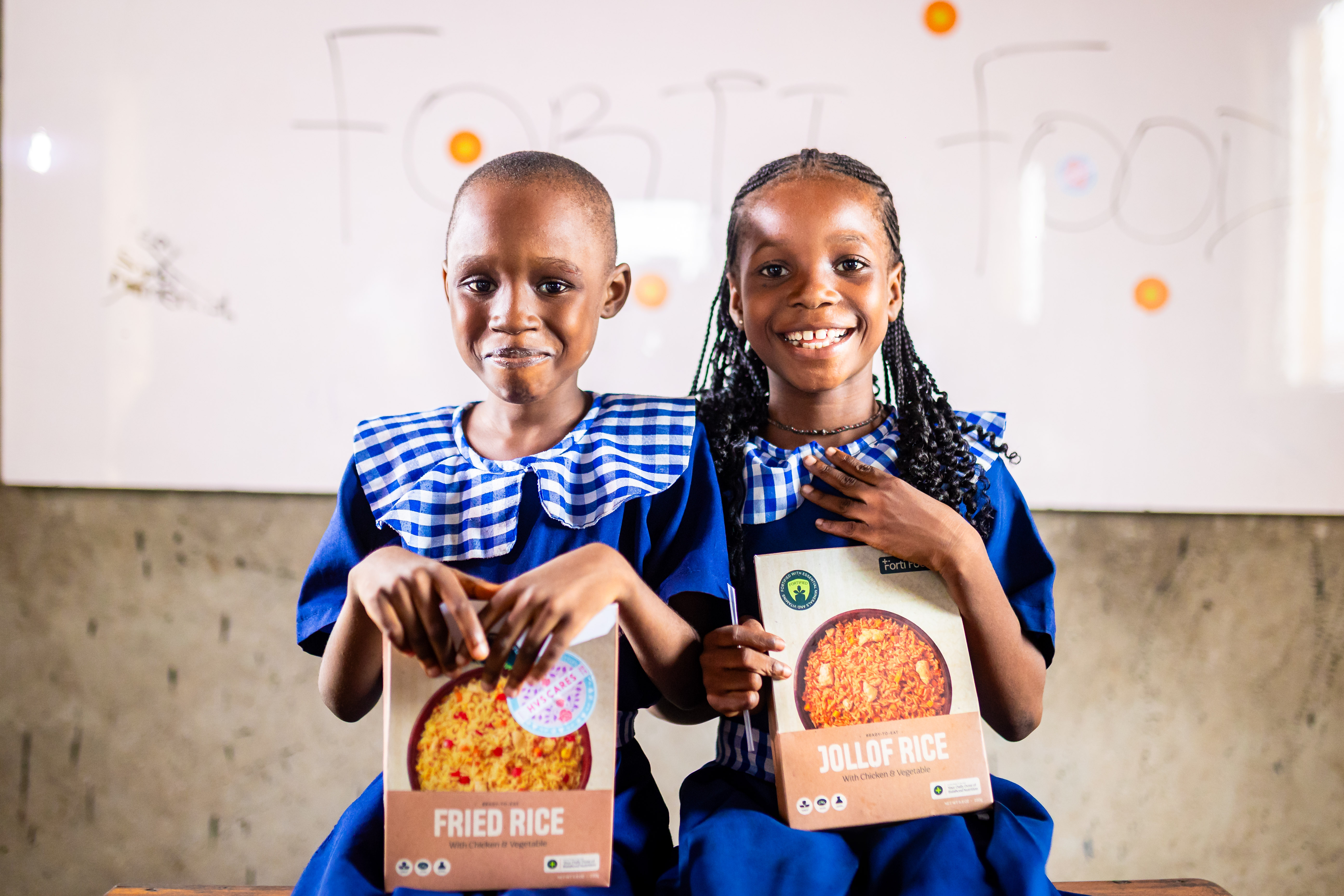Across Nigeria, 65% of students go to school hungry—a crisis driven by rising food prices, disrupted feeding programs, and climate shocks. But a new wave of innovation is shifting the narrative from charity to dignity. By combining fortified ready-to-eat meals with local sourcing, nutrition science, and systems thinking, communities are proving that hunger can be solved sustainably. This piece explores how Nigeria’s emerging food security ecosystem is redefining what it means to feed children—with solutions that nourish both body and pride.

Picture a classroom in southeastern Nigeria. It's 11 AM. Half the children stare at their books with glazed eyes, stomachs growling. They left home without breakfast. There's no school lunch coming.
This isn't an isolated story. It's the daily reality for roughly 65% of Nigerian students and pupils, a staggering figure rooted in household food insecurity that has reached crisis proportions across the country.
But here's what makes this moment different from past decades: we're finally seeing innovations that treat food insecurity not as a charity problem, but as a dignity problem requiring comprehensive solutions.
Three forces collided to create today's crisis. First, staple food prices became wildly unpredictable. When the cost of rice or cassava swings 30% in a month, families can't plan. They skip meals. Children eat less, and eat poorly.
Second, COVID-19 dismantled school feeding programs that millions of families relied on. When schools closed, so did the one guaranteed meal many children received daily. The ripple effects persist years later, with programs struggling to rebuild capacity and reach.
Third, climate shocks and insecurity displaced entire communities. Families in emergency shelters face impossible choices: pay for food or medicine? Rent or school fees?
Research tracking Nigerian households through these disruptions found something sobering. Food insecurity doesn't just mean occasional hunger. It means children developing poorly, falling sick frequently, and struggling to concentrate in school. The consequences compound across years.
Traditional food aid often misses the mark in three critical ways.
It ignores local food cultures, sending unfamiliar items families don't know how to prepare. It requires resources many lack (clean water, cooking fuel, refrigeration). And it treats recipients as passive beneficiaries rather than active participants in their own food security.
The interventions showing real promise flip this script entirely.
Take fortified ready-to-eat meals designed specifically for challenging environments. These aren't generic emergency rations. They're culturally familiar foods (jollof rice, beans, local vegetables) that children actually recognise and enjoy. They're packaged to survive flood zones and displacement camps without refrigeration. Most importantly, they're fortified with nutrients that directly address the malnutrition patterns researchers observe in Nigerian children.
At Muna IDP Camp in northeastern Nigeria, this approach achieved something remarkable: 95% reduction in malnutrition rates among participating children. The difference wasn't just nutrition science. It was dignity preservation. Children ate foods that felt like home, not like charity.
Here's what the data increasingly shows: sustainable food security requires connecting four elements simultaneously.
Local farmers need reliable markets for their produce. Homegrown school feeding programs that source locally create income stability for smallholder farmers while reducing supply chain costs. Studies in northeastern Nigeria found these programs improved household food security for farming families themselves, creating positive feedback loops.
Schools and communities need partnerships with organisations that understand both nutrition science and operational realities. Programs fail when they ignore infrastructure constraints (no kitchens, limited water access) or cultural food preferences.
Innovation partners must design for real-world complexity. Extended shelf-life packaging matters in areas with unreliable electricity. Water-resistant materials matter in flood-prone regions. These aren't luxury features; they're the difference between food that reaches children and food that spoils in transit.
Government and humanitarian organisations must shift from emergency mindset to systems thinking. Short-term food distributions save lives during acute crises. But breaking the cycle of food insecurity requires sustained commitment to infrastructure, supply chains, and program monitoring.
What's emerging in Nigeria offers lessons for the 57 countries facing similar crises. When ready-to-eat fortified meals connect with homegrown sourcing, community partnerships, and long-term institutional commitment, children don't just eat. They thrive.
The 65% figure should alarm us. But it should also mobilise us.
Every percentage point represents thousands of children whose cognitive development suffers, whose immune systems weaken, whose potential diminishes. Yet the same research revealing this crisis also illuminates pathways forward.
Innovations in fortified nutrition are proving that emergency response and dignity can coexist. Operations spanning Nigeria, Chad, and Cameroon demonstrate scalability. Satisfaction rates exceeding 100% among recipients (yes, programs report families requesting to participate even beyond planned capacity) show what's possible when we design with communities, not just for them.
The question isn't whether we can solve child food insecurity in Nigeria. We're already seeing it work in specific contexts. The question is whether we'll commit to the partnerships, investments, and systems thinking required to scale what works.
What would change if we stopped treating food security as charity and started treating it as infrastructure? What if every school had the same reliable access to nutritious meals that every school has to textbooks?
These aren't rhetorical questions. They're invitations to reimagine what humanitarian response can become when innovation meets compassion, when business models serve mission, and when we finally put children's dignity at the center of every intervention.
The 65% can become 30%, then 10%, then a historical footnote. But only if we act like we believe Nigeria's children deserve nothing less.
Your move: What role could your organisation play in creating food systems that preserve dignity while delivering nutrition? What partnerships might bridge the gap between crisis response and lasting resilience?
#FoodSecurity #HumanitarianInnovation #Nigeria #ChildNutrition #SocialImpact